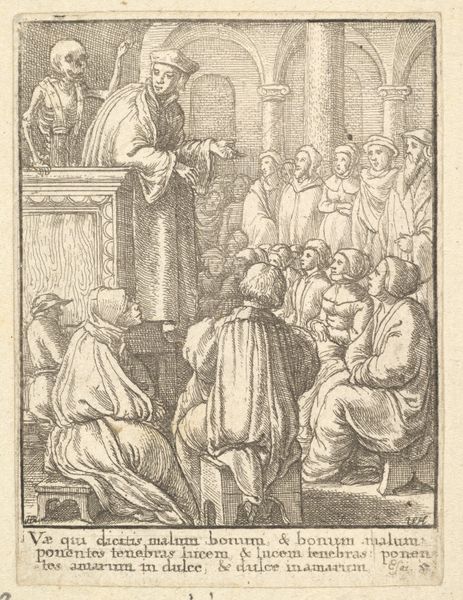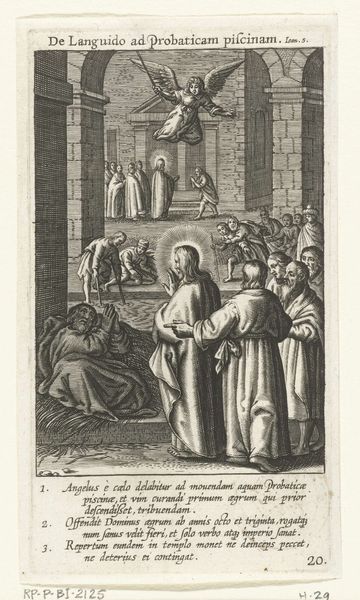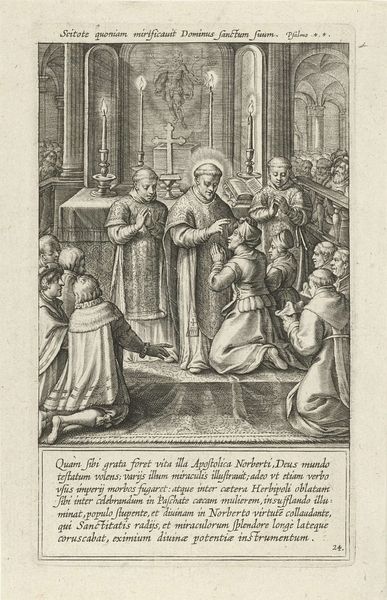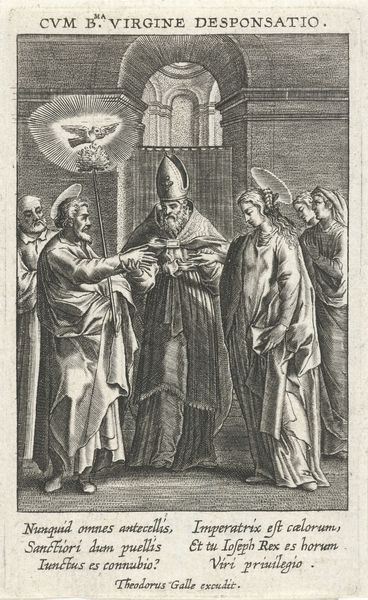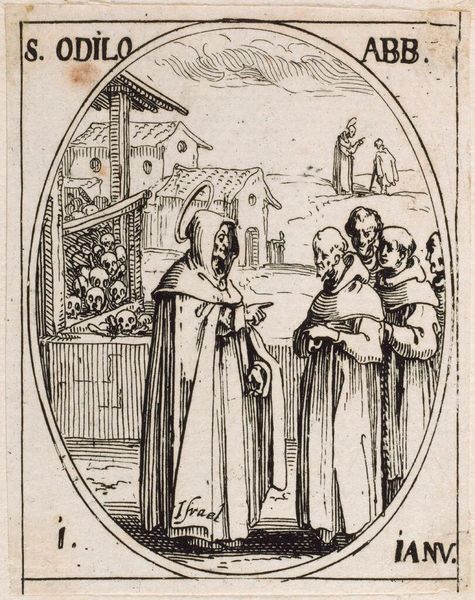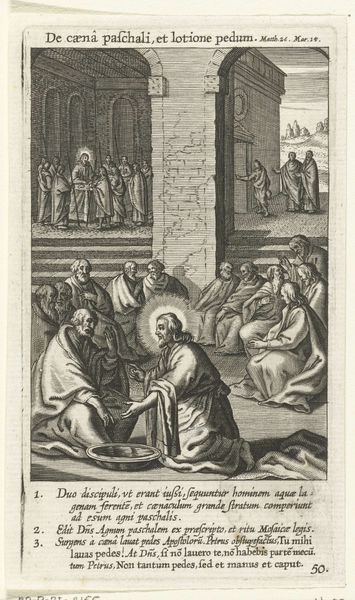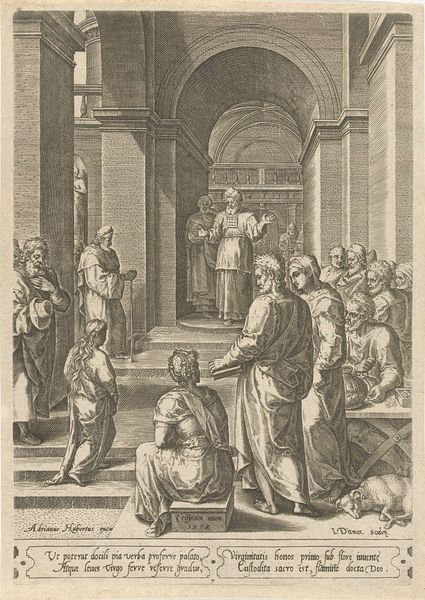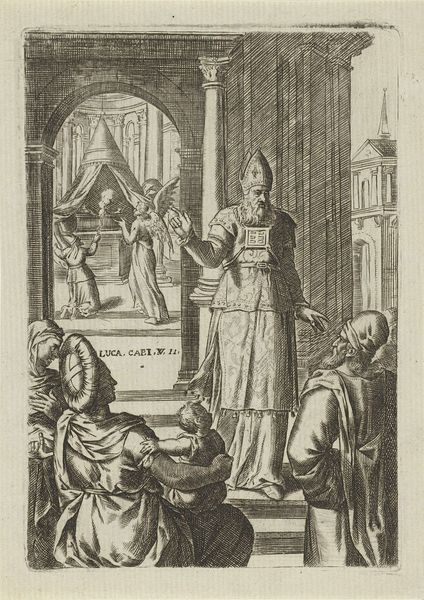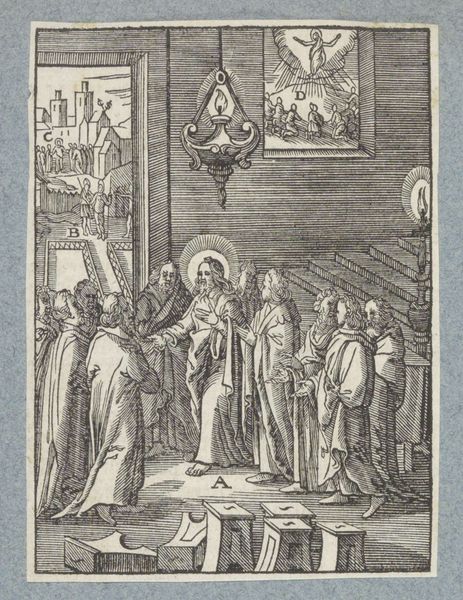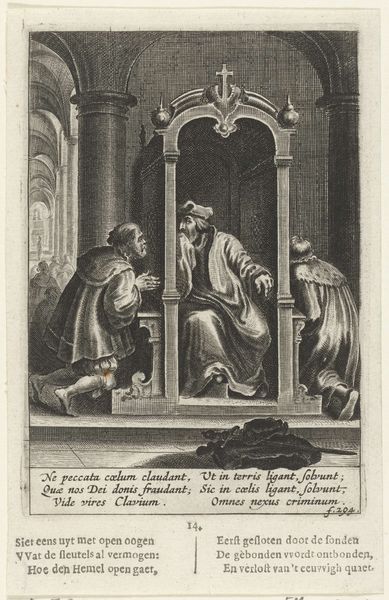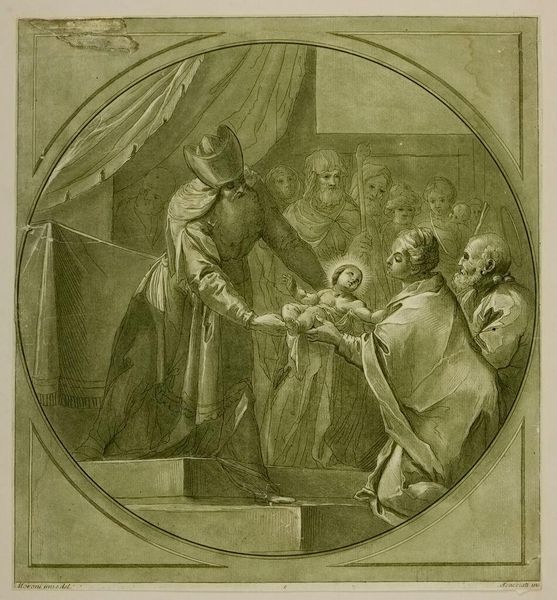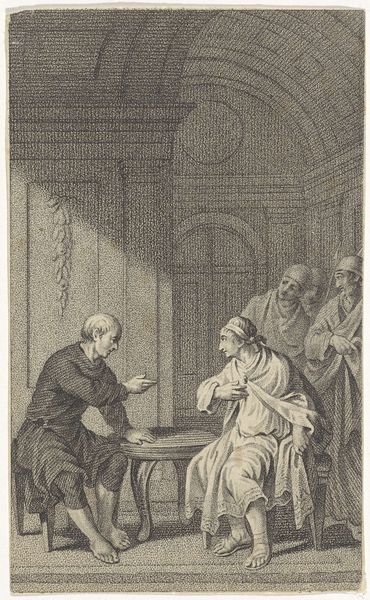
print, engraving
#
portrait
#
baroque
# print
#
old engraving style
#
history-painting
#
engraving
Dimensions: height 103 mm, width 59 mm
Copyright: Rijks Museum: Open Domain
Curator: Looking at this print, "Man presenteert boek aan paus", created anonymously in 1663, offers such a fascinating glimpse into the period. Editor: It has an undeniably reverent air to it, almost claustrophobic. The kneeling man and the seated Pope, and those imposing religious figures lurking in the background... the engraving just crackles with formality and the weight of tradition. Curator: Indeed. The visual is teeming with Baroque conventions, a reflection of its era. More than anything this work interests me in its public presentation— the artist sought to place this individual figure into the broader historical canon and solidify their reputation with posterity. Editor: Note, too, how books feature so prominently: there is the one held by the central figures, another on a stand on the side. It all serves to underline the value that is attached to knowledge. Are these references intended as emblems? Curator: Absolutely, there is that implicit visual claim to knowledge-making happening here. We see repeated symbols, robes, chairs, bound texts; which reassert a clear set of hierarchical signals within the frame, and it speaks to an artistic strategy interested in reinforcing social expectations. Editor: The composition emphasizes this too: the kneeling man offering the volume and then the papal authority elevated on that monumental chair in the seat of judgement. You've got a physical enactment of respect playing out right before us. Curator: And that perspective brings so much more clarity on how artists working within institutions had to constantly be conscious about their roles, and what kind of message they should deliver. Editor: It's quite interesting how this image acts as a time capsule—revealing so many layers. Curator: Ultimately this piece reflects that complex relationship. Art then had a different social imperative, functioning much like propaganda. Editor: A compelling reflection on an age when visual imagery worked to shore up not just beliefs, but power.
Comments
No comments
Be the first to comment and join the conversation on the ultimate creative platform.
